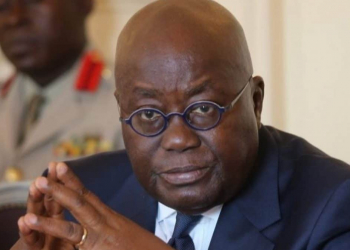The cedi could be in for its toughest test this time in the year, as seasonal demand for the US dollar by importers, and the uncertainties surrounding the impending elections have begun to unsettle it somewhat.
At a year-to-date depreciation of 4.6 percent, the careworn currency has demonstrated rare resilience, but an analysis of the final quarter performance shows some emerging cracks, which could be down to the increased seasonal demand for imports as well as the pressure from the December 7 polls.
In October, it fell by 0.19 percent against the dollar and has depreciated by 0.39 percent in this month, putting a damper on hopes it could end the year on a high.
RMB Global Markets Research, a division of First Rand Bank Ltd, in its weekly currency update, said the cedi would experience some weakening pressure in the first half of this week as “there’s unmet dollar demand,” as corporates scramble to settle their year-end import bill.
The South African research firm believes, however, that the pressure will likely ease off as the central bank begins forex auctions this week, which will most likely add more liquidity onto the market.
Also, Kojo Addae-Mensah, Chief Executive Officer of Databank, an investment bank, told the B&FT he suspects that the cedi’s recent weakness could be attributed to the design of speculators, who want to cash in on the uncertainties surrounding the elections.
“Suddenly the cedi has started depreciating again and we are not sure what is going on. But we believe that is speculation towards election,” Mr. Addae-Mensah said.
He suspects, also, that some investors could be converting their earnings on treasury bills and bonds into dollars, following a significant drop in T Bill rates from a high of 25 percent in the first quarter to 18.6 percent last week, which could put pressure on the cedi.
“Those moving their monies into dollars because the rates are dropping want to hedge in dollars, but that doesn’t make sense to me. Maybe the coming election is a reason why the depreciation is picking up. But honestly speaking, it is overblown.
Cedi’s performance
Last year, the local currency suffered a 15.7 percent depreciation, whilst in 2014, it was even higher at 30.9 percent.
This year, however, a combination of an IMF bailout programme, a US$1.8 billion cocoa syndicated loan, a US$750 million Eurobond and the central bank’s tightening of the monetary policy has led to the cedi recording one of its best performances in recent years.
The last time Ghana went to the polls – the year 2012 – the cedi’s performance was largely erratic in the first half of the year when it depreciated by 17.2 percent, recovering to finish the year at 17.5 percent.
In 2008, when the ruling government won at first of its eight-year term, the cedi begun the year trading at GH¢0.95 to the dollar and closed at GH¢1.11, a depreciation of about 17 percent.
Join GhanaStar.com to receive daily email alerts of breaking news in Ghana. GhanaStar.com is your source for all Ghana News. Get the latest Ghana news, breaking news, sports, politics, entertainment and more about Ghana, Africa and beyond.


